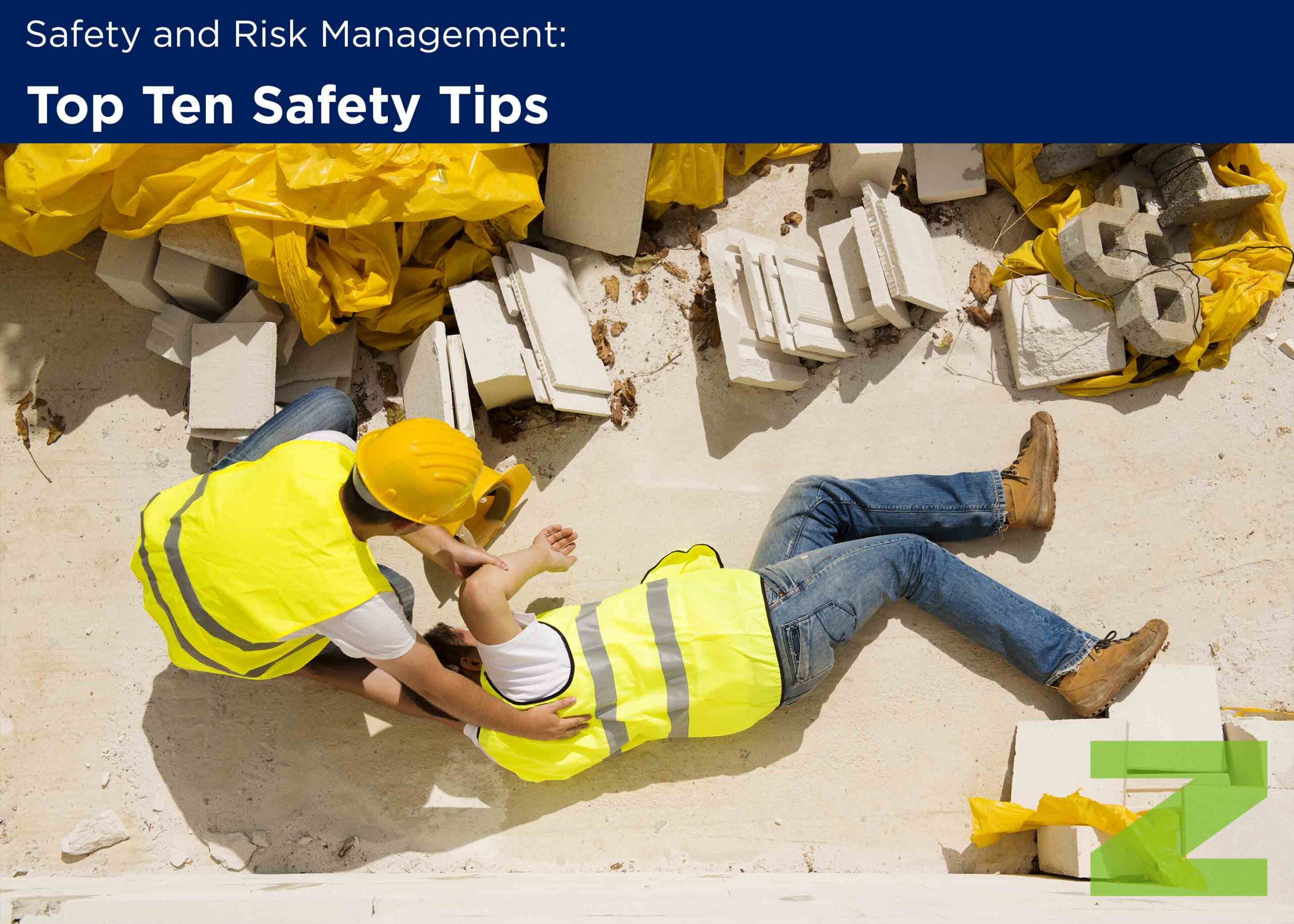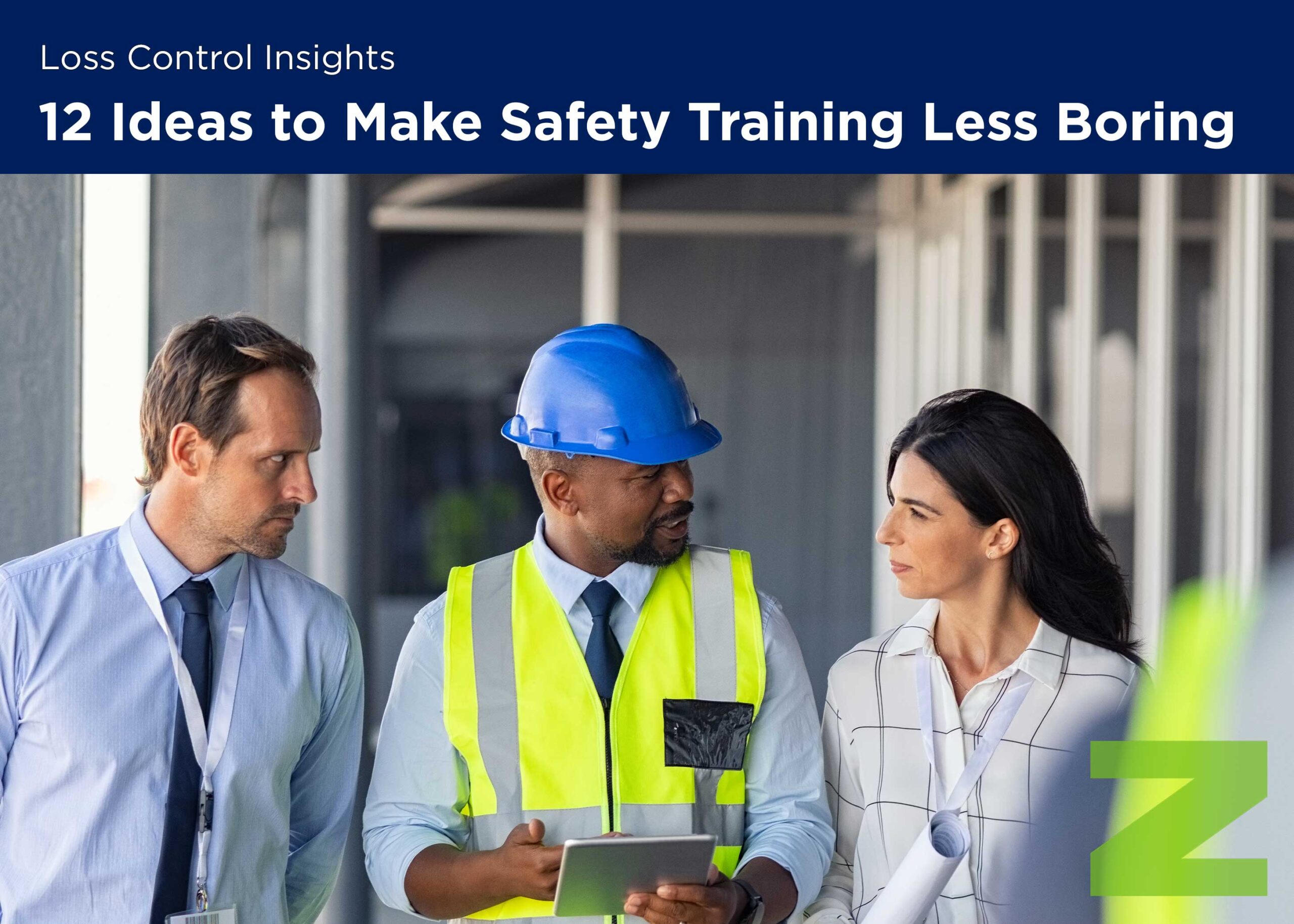Given the recent tragedy involving a fatality during a construction accident, we wanted to offer a refresher on top safety tips. It is always our desire to offer value and insight that matters and to encourage those in the fields we service to be prepared and informed.
For these safety tips, we focused on OSHA’s Top 10 Most Frequently Cited Standards in Construction. For each standard cited we have a brief explanation of the standard or hazard along with some general tips for workers to keep in mind along with some of the requirements for employers to follow in order to provide a safe work environment for their employees.
1. Subpart M – Fall Protection – 1926.501 Duty to Have Fall Protection.
Duty to have fall protection is the most cited standard in the construction industry and is one of the leading causes of worker deaths in construction. Employers need to do a better job of assessing job sites and implementing fall protection systems to protect workers.
Workers: Workers should familiarize themselves with all potential fall hazards on a job site. Never work in an area where fall protection systems have yet to be installed. Workers using personal fall arrest systems should inspect them before each use to ensure they are working properly and are free of damage. The lanyard or lifeline should be short enough to prevent the worker from making contact a lower level in the event of a fall. This means taking into account the length of the lanyard, length of dynamic elongation due to elastic stretch and the height of the worker.
Employers: Employers are required to provide fall protection systems to protect their workers on walking or working surfaces with unprotected edges or sides that are six feet above a lower level. Fall protection can include guardrails, safety net systems and personal fall arrest systems. Guardrails are the only method approved that actually prevents falls from occurring. Safety nets and personal fall arrest systems prevent workers from falling a great distance.
Fall protection includes protecting workers from falling into holes such as elevator shafts and skylights as well as excavations. Employers are also required to protect workers from falling objects by requiring hard hats be worn by workers and by installing toeboards, screens or guardrails, erecting canopies or barricading the area to keep workers out.
2. Subpart L – Scaffolds – 1926.451 General Requirements.
Approximately 65% of all construction workers perform work on scaffolds. Employees performing work on and around scaffolding are exposed to falls, electrocutions and falling object hazards.
Workers: Hard hats should be worn when working on, under or around a scaffold. Workers should also wear sturdy, non-skid work boots and use tool lanyards when working on scaffolds to prevent slips and falls and to protect workers below. Workers should never work on scaffolding covered in ice, water or mud. Workers are prohibited from using boxes, ladders or other objects to increase their working height when on a scaffold.
Workers should never exceed the maximum load when working on scaffolds. Never leave tools, equipment or materials on the scaffold at the end of a shift. Workers should not climb scaffolding anywhere except for the access points designed for reaching the working platform. Tools and materials should be hoisted to the working platform once the worker has climbed the scaffold.
If personal fall arrest systems are required for the scaffold you will be working on, thoroughly inspect the equipment for damage and wear. Workers should anchor the system to a safe point that won’t allow them to free fall more than six feet before stopping.
Employers: All scaffolding should be designed, erected and disassembled by a competent person. A competent person should also inspect scaffolding before the start of work each day to ensure that it is safe for use.
Scaffolding should be erected on solid footing, fully planked and at least 10 feet away from power lines. Scaffolding should be erected with guardrails, midrails and toeboards to protect employees working on, under and around scaffolding.
3. Subpart X – Stairways and Ladders – 1926.1053 Ladders.
Improper ladder use is one of the leading causes of falls for constructions workers resulting in injury or death. Reasons for ladder falls include incorrect ladder choice, failure to properly secure the ladder and attempting to carry tools and materials by hand while climbing.
Workers: Always maintain three points of contact while ascending and descending a ladder, that’s both feet and at least one hand. Portable ladders should be long enough to be placed at a stable angle extend three feet above the work surface. Workers should tie ladders to a secure point at the top and bottom to avoid sliding or falling. Tools and materials should be carried up using a tool belt or a rope to pull things up once you’ve stopped climbing. Never load ladders beyond their rated capacity, including the weight of the worker, materials and tools.
Employers: A competent person should inspect all ladders before use each day. Defective ladders should be marked or tagged out and taken out of service until they can be properly repaired. Workers should be trained on ladder safety and know how to select the proper ladder for the job. All ladders on the construction site should conform to OSHA standards. This includes job-made ladders, fixed ladders and portable ladders, both self-supporting and those that aren’t. If workers are using energized electrical equipment, ladders should have nonconductive side railings.
4. Subpart M – Fall Protection – 1926.503 Training Requirements.
It’s not a surprise that the top four most frequently cited OSHA standards in construction have to do with protecting workers from falls. Falls are the leading cause of fatalities in construction, accounting for nearly 40% of all worker deaths. Providing proper and ongoing training to workers can go a long way in reducing the number of falls suffered at the construction site.
Workers: Workers should be able to recognize the hazards of falling and know the procedures to follow to minimize hazards and prevent falls.
Employers: A competent person is required to provide training to all employees that might be exposed to fall hazards. Again, this should cover all employees because at some point nearly everyone on the construction site is exposed to a fall hazard of some type. Topics of the training program should include the nature of fall hazards present on the construction site, proper erection, inspection and maintenance of fall protection systems, use of fall protection systems and personal fall arrest systems and the role of the employee in safety monitoring and the fall protection plan.
Employers are also required to maintain certification records of fall protection planning for all employees. Retraining is required for changes that render prior training obsolete and instances where it is apparent that a worker has not retained enough knowledge from the training program to ensure their safety.
5. Subpart E – Personal Protective and Life Saving Equipment – 1926.102 Eye and Face Protection.
OSHA recently updated their standard covering eye and face protection in construction with the new rule going into effect in April 2016.
OSHA requires that workers be provided with and wear face and eye protection when there are eye or face hazards present from flying particles, molten metal, liquid chemicals, acids or caustic liquids, chemical gasses or vapors, or potentially injurious light radiation. These hazards are present when doing a variety of task on the job site such as welding, chipping, grinding, masonry work, sanding, woodworking and drilling. When flying object hazards are present, eye protection must be equipped with side protection or be fitted with detachable side protectors.
Workers: When wearing eye and face protection, workers should make sure that they don’t interfere with their movements and fit snugly on their faces. Eye and face protection should be kept clean and in good repair. Workers should inspect face and eye protection before use to ensure it is free of cracks, chips and other damage. Eye and face protection that becomes damaged should be replaced immediately.
Employers: Employers are required to provide eye and face protection to workers free of charge. Eye and face protection must meet one of the following consensus standards: ANSI Z87.1-1989 (R01998), ANSI Z87.1-2003 or ANSI/ISEA Z87.1-2010 requirements. Employers should issue eye and face protection to workers based on an assessment of anticipated hazards. If workers have prescription lenses, employers are required to make sure that they have eye protection that incorporates the prescription or that can be worn over the corrective lenses without disturbing them.
6. Subpart E – Personal Protective and Life Saving Equipment – 1926.100 Head Protection.
Hard hats are commonplace at the construction site. They protect workers a number of hazards such as falling and flying objects, electrical shock and other impacts.
Workers: Workers are required to wear head protection wherever there is the potential for being struck in the head, which is basically the entire time you are on the construction site. Possible scenarios include falling tools or debris, accidental nail gun discharge, contact with electrical hazards or swinging construction equipment. Workers should inspect their hard hat for any cracks, dents or any signs of deterioration. Hard hats should fit snugly on your head and not come loose during normal movements or work activities.
Employers: Employers are responsible for providing all employees with head protection that meets consensus standards outlined by the American National Standards Institute (ANSI) or is constructed in accordance with one of those consensus standards. Employers are not allowed to charge employees for the cost of head protection or require them to provide their own hard hat unless they do so voluntarily. Hard hats should be kept in good condition and be replaced immediately if they suffer a heavy blow or electric shock.
7. Subpart Z – Toxic and Hazardous Substances – 1910.1200 Hazard Communication.
This is a general industry standard that focuses on requirements for employers that have hazardous chemicals in their workplace. Some examples of hazardous materials commonly found at construction sites include lead, silica, asbestos and treated wood or wood that will be cut and generate dust. Certain building materials also contain hazardous chemicals such as zinc, cadmium, beryllium and mercury.
Workers: Workers should be able to read and use Material Safety Data Sheets (MSDS) for any hazardous chemical being used at the construction site. Employees should wear proper PPE when handling hazardous chemicals and should clean up any spill when they occur.
Employers: Employers are required to implement a written hazard communication program that includes an inventory of all hazardous chemicals used at the site. All container of hazardous substances must have a hazard warning and be labeled. Employers should have an MSDS available for each hazardous substance. Employees should be trained regarding the risk of all hazardous chemicals along with proper handling instructions.
8. Subpart C – General Safety and Health Provisions – 1926.020 General Safety and Health Provisions.
The purpose of this standard is to protect construction workers from being required to “work in surroundings or under working conditions which are unsanitary, hazardous, or dangerous to his health or safety” by contractors and subcontractors.
Workers: The key takeaway from this standard for workers is that they should know that there are protections in place for their safety while working on the construction site. This includes receiving proper training for specific job duties and being provided with personal protective equipment (PPE). Workers should never operate any machinery or equipment if they have not been properly and adequately trained on its safe operation.
Employers: Employers are required to implement safety programs in order to protect workers and prevent accidents. A competent person(s) is required to provide inspections of job sites, equipment and materials and includes ensuring that non-compliant tools and machinery are taken out of use by locking or tagging or removing them from the job site Construction standards take precedence over any similar or applicable general industry standard.
In addition to providing necessary PPE to employees at no cost, employers are also required to provide training to all employees on hazards and all related matters for construction standards applicable to a worker’s job duties.
9. Subpart L – Scaffolds – 1926.453 Aerial Lifts.
Aerial lifts fall under scaffolding and are vehicle-mounted devices used to elevate workers such as articulating and extendable boom platforms, vertical towers and aerial ladders. Hazards associated with the use of aerial lifts include fall and ejections from the lift platform, tip-overs and structural failures of the lift, electric shock, contact with overhead objects or ceiling and being struck by objects falling from lifts.
Workers: Workers must be trained and authorized in order to operate an aerial lift. Inspect all vehicle and lift components based on the manufacturer’s recommendations before operating an aerial lift to ensure it is in safe working condition. Never operate a lift if any component is missing, damaged or appears defective.
Always stand on the floor of the lift platform or bucket when working, never use a ladder or other device to increase your working height. Make sure that your harness or restraining belt and lanyard are securely attached to the boom or bucket and that they are in good working condition.
Never exceed the load capacity or the vertical and horizontal reach limits of the lift. Lower the lift platform when driving the lift and stay at least 10 feet away from overhead lines.
Employers: Employers should ensure that all workers operating aerial lifts receive proper training before being authorized to use them and provide retraining in the event a worker has an accident while operating a lift, hazards are discovered, a different type of lift is being used or if the workers are observed improperly operating a lift.
In addition to ensuring that all aerial lifts are in good operating condition, employers are also responsible for having work zones inspected for hazards including holes or unstable surfaces, overhead obstructions, inadequate ceiling heights and slopes or ditches. Employers should also have power lines de-energized when possible when workers are in the vicinity.
10. Subpart M – Fall Protection – 1926.502 Fall Protection Systems Criteria and Practices.
This standard covers all of the requirements and provisions for the different types of fall protection required by OSHA. It covers items like guardrail height requirements and minimum tensile strength for components of personal fall arrest systems. This standard also covers requirements for covers over holes and openings and provisions for establishing controlled access zones.
Workers: Workers should be aware of potential fall hazards as well as what fall protection systems have been put in place to protect them. If workers are using personal fall arrest systems, they should inspect them for wear and ensure that all components are in good working order and that the harness properly fits.
Employers: Employers are required to install all required fall protection systems before any employees begin work. Employers should remember that they are also responsible for protecting workers from falling objects with either toeboards, canopies or guardrails. If using a safety monitoring system, the safety monitor should be a competent person who remains on the same walking or working surface and in visual sight and hearing distance from the worker they are monitoring. They should be able to identify fall hazards and warn workers when they are working unsafely or may be unaware of a fall hazard.
If conventional fall protection methods laid out by OSHA are infeasible or create a greater hazard and a worker is performing leading edge work, precast concrete erection or residential construction work, the employer must have a fall protection plan. The plan must be site specific and developed by a qualified person. In areas where conventional methods cannot be used must be classified as controlled access zones and only workers designated to perform work there are allowed to enter.
Work Smart, Be Safe!





